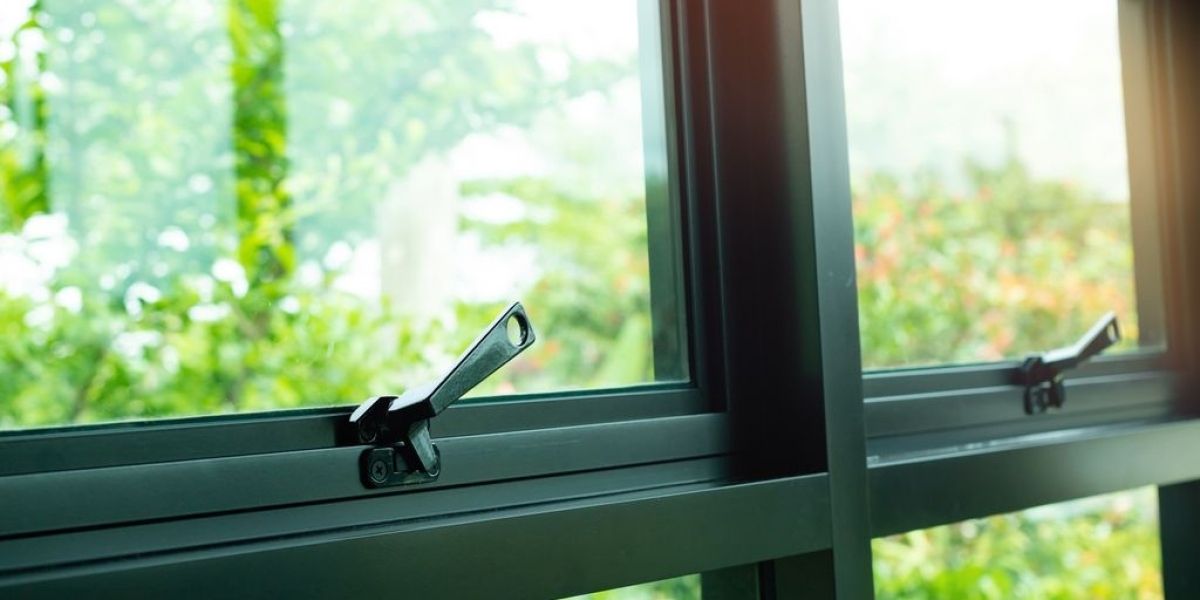Homeowners think about security, their minds often go straight to alarm systems, CCTV cameras, or reinforced doors. But there’s one crucial element that’s often overlooked, the humble window handle. Though it might seem like a small detail, the right handle can make a major difference in keeping your home safe, secure, and comfortable.
We’ll explore how handles contribute to home security, the different types available, and the features you should look for to ensure maximum protection.
The Overlooked Role of Window Handles in Home Security
Windows are one of the most common entry points for burglars. According to several home security studies, nearly 30% of break-ins occur through windows, often because they’re left unlocked or fitted with weak, outdated latches. A sturdy, well-designed window handle can significantly reduce this risk.
A handle isn’t just a means of opening and closing your window, it’s a locking mechanism that helps secure your home against unauthorized entry. The best handles combine strength, durability, and smart design to resist forced entry, making them an essential part of your home’s first line of defense.
Types of Handles and Their Security Features
Different types of windows require different types of handles, and each comes with its own security characteristics. Understanding these can help you make better choices when upgrading or replacing your window fittings.
1. Espagnolette (Espag) Handles
Espag handles are among the most common in modern homes, especially on uPVC windows. They operate with a spindle that turns a multi-point locking mechanism inside the frame. When locked, the system secures the window at several points along the edge, making it extremely difficult for intruders to pry open.
Security Benefit:
Multi-point locking distributes pressure across multiple latches, providing superior resistance to forced entry compared to single-point locks.
2. Cockspur Handles
Cockspur handles are often found on older uPVC or aluminum windows. They feature a spur that locks over a wedge block on the frame. While these handles are simpler, newer versions can be upgraded with key-locking mechanisms to enhance security.
Security Tip:
If your windows use cockspur handles, consider upgrading to a locking cockspur model with a reinforced spur and durable key mechanism.
3. Tilt and Turn Handles
Tilt and turn windows use specialized handles that allow two opening positions — tilting for ventilation or turning for full opening. These handles typically include an integrated locking system that only allows movement when unlocked with a key.
Security Benefit:
Tilt and turn handles are designed with multi-point locking and can provide excellent security when closed. Many also feature a restricted “tilt-only” mode for safe ventilation without compromising security.
4. Sash Window Locks and Lifts
Traditional sash windows use sliding mechanisms that can be secured with sash locks or dual-screw bolts. Modern sash handles often incorporate hidden locks or restrictors that make it much harder to slide the window open from the outside.
Security Tip:
If you live in a period home with sash windows, consider fitting sash stops or key-operated restrictors for a discreet but effective security upgrade.
5. Inline and Offset Handles
Inline handles are symmetrical and can fit either side of the window, while offset handles are angled for right- or left-hand operation. Both types can include locking systems that prevent rotation without a key.
Security Benefit:
Lockable inline handles are a versatile choice for double-glazed or tilt-and-turn windows, ensuring security without compromising design or usability.
The Importance of Locking Mechanisms
A window handle’s true security lies in its locking mechanism. Key-locking handles are a simple yet powerful deterrent against burglars. Even if an intruder manages to break the glass, the handle remains locked, preventing the window from being opened fully.
For added safety, many modern handles use push-button locks or child-safety locks — ideal for families with young children who might accidentally open windows. These locks also serve as an extra layer of defense against unauthorized access.
Pro Tip:
Choose handles certified to PAS 24 or Secured by Design (SBD) standards. These certifications ensure the hardware meets rigorous security and durability tests endorsed by UK police and industry regulators.
Material Matters: Strength and Durability
The material of your window handles affects not just appearance but also strength and longevity. Common materials include:
Zinc Alloy: Strong, corrosion-resistant, and ideal for modern designs.
Aluminum: Lightweight and durable, suitable for contemporary homes.
Stainless Steel: Highly durable, rust-proof, and resistant to wear — perfect for coastal or humid environments.
Brass or Chrome: Often used for aesthetic appeal but also available in robust, lockable versions for added security.
A strong handle made from quality materials ensures that even under pressure or attempted tampering, it won’t easily give way.
Design and Aesthetic Considerations
While security should always come first, handles also contribute to your home’s style. Fortunately, today’s market offers secure handles in a variety of finishes — from sleek brushed nickel to classic white or matte black — allowing you to balance safety with design.
Modern handles can complement any architectural style, whether traditional, contemporary, or minimalist. This means you no longer have to choose between elegance and protection — you can have both.
Additional Safety Enhancements
Beyond the handle itself, consider pairing your windows with additional security features such as:
Window restrictors: Prevent windows from opening beyond a certain point, offering both child safety and burglary protection.
Laminated or toughened glass: Harder to break, reducing the risk of entry even if the handle is compromised.
Window sensors and alarms: Detect forced entry and alert homeowners immediately.
Security film: Strengthens glass and prevents shattering.
When combined with a robust handle and locking mechanism, these measures form a comprehensive window security system.
Maintenance: Keeping Handles Secure Over Time
Even the most secure window handle can lose effectiveness if not properly maintained. Over time, screws can loosen, locks can stiffen, and corrosion can weaken the metal. To ensure ongoing protection:
Inspect regularly: Check for loose screws, cracks, or signs of wear.
Lubricate locks: Use a light silicone spray every few months to keep mechanisms smooth.
Tighten fittings: Make sure all fasteners and mounting points remain firm.
Replace when needed: If the handle feels loose, rattles, or fails to lock properly, replace it promptly.
Consistent maintenance extends the life of your handles and preserves their security performance.
Final Thoughts
Window handles may seem like a minor detail, but they play a major role in your home’s security. From multi-point locking espag handles to child-safe tilt-and-turn designs, modern options combine technology, durability, and design to offer real peace of mind.
When it comes to protecting your home, security starts at the smallest touchpoints — and that includes your windows. Investing in high-quality, lockable handles isn’t just about safety; it’s about creating a home that feels secure, stylish, and built to last.








